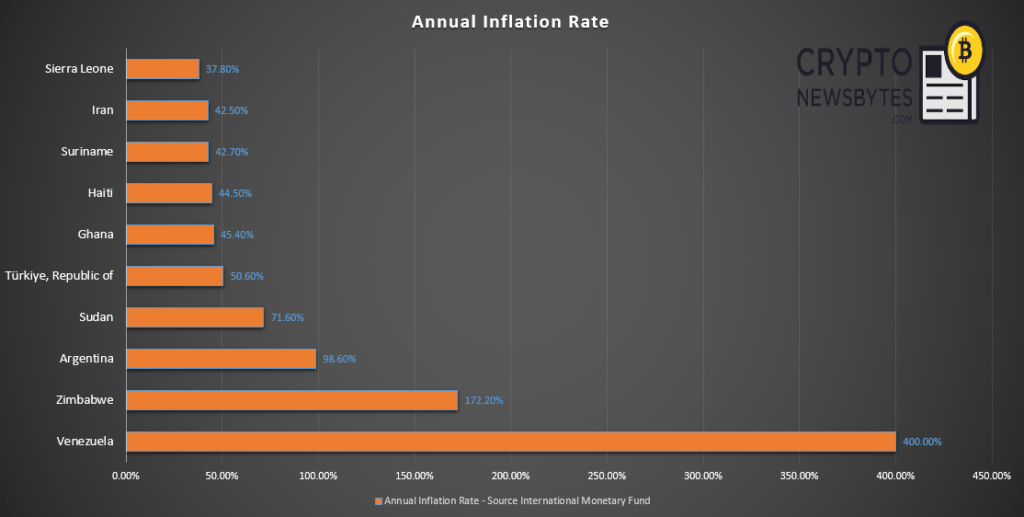Imagine saving up for something nice. Maybe a new appliance or a simple vacation you have been dreaming of. After saving for a year, you find out that the fridge is more expensive or that plane fares are higher. Your dream has just been ruined by inflation. The average person’s purchasing power is being eroded by continuous price increases. However, people are starting to look for ways to hedge against it. Some are looking at investment instruments like Bitcoin and other crypto assets to beat inflation.
But is it wise to put your money in crypto instead of saving in the bank or buying traditional stocks? Let us look at the numbers and decide.
What is Inflation?
We need to understand inflation before we move forward.
- In the simplest of terms, inflation is when prices go up, therefore a consumer’s purchasing power goes down.
- This affects both the price of goods and services
- The inflation rate is usually expressed in percentages. A positive increase means prices are going up and a negative one means prices are going down.
- The Fed sets and adjusts the US inflation rate. The FOMC, the Fed’s monetary arm, makes the policy decisions.
- Presently the Fed has a 2% inflation target and can use several tools to bring it down to this level.
- One of the tools is to increase or decrease Interest rates. Higher interest rates can make borrowing too expensive, thus less money for business investments. This can cool down an overheating economy
- Another tool is open market operations, which involve buying or selling government securities in the open market. The Fed buys securities with newly created money, which increases the money supply and stimulates the economy – which could increase inflation. Selling securities could have the opposite effect.
How bad is Inflation Around the World?
According to the US Bureau of Labor Statistics, the inflation is currently at 3.7%. If you bought a basket of goods worth $100 in August 2022, you would need to spend $103.70 in August 2023 to buy the same products.
The US inflation rate is high and far from the Fed’s 2% target. However, that is nothing compared with other countries. The infographic will show how other countries are faring.
The data used for the graph above came from the International Monetary Fund (IMF). The graph only shows the ten countries with the highest inflation. Venezuela has the worst inflation rate of 400% while Sierra Leone has 37.8%. In comparison, the world average in 2022 was 8.27%.
Comparing Assets as Inflation Hedge
First, we need to understand that crypto is not yet widely accepted as legal tender, though some jurisdictions allow it. So most would need to buy crypto, hold it, and convert it to the local currency when needed.
We cannot cover all cryptocurrencies, so we will compare Bitcoin to other investment assets. We will compare it with gold, which is an accepted store of value. BTC will also be compared with the S&P 500 (SPX), the index of 500 publicly traded companies in the US.
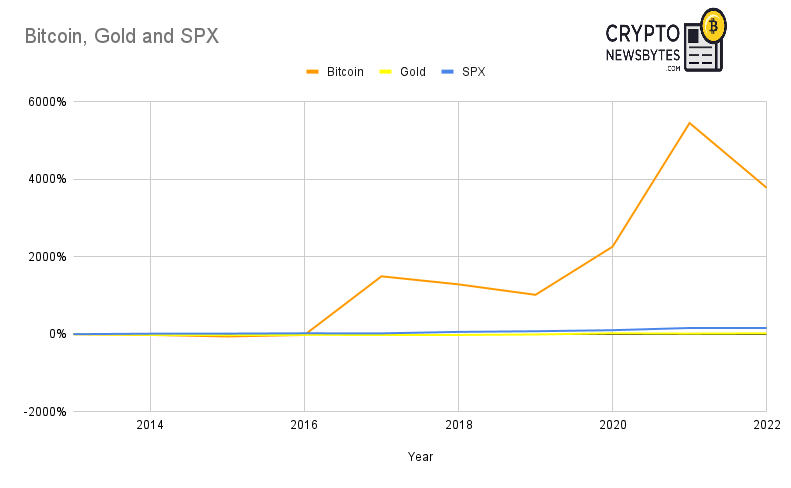
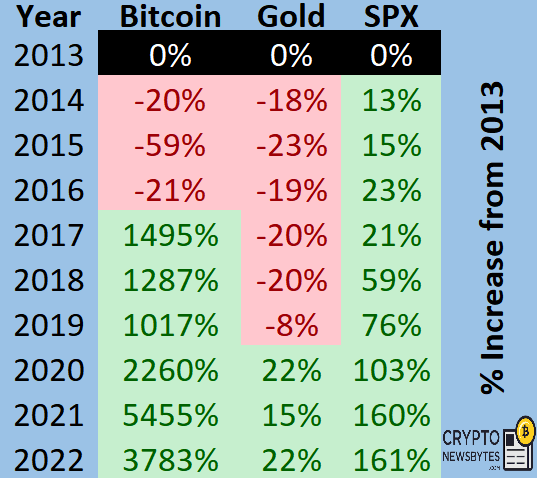
The table and chart above show the percent increase of the three assets from 2013 to 2022. We took the highest price of each asset in a given year and plotted it. We are after the percentage increase from the year 2013 to 2022. For example, we wanted to know what would happen to an investment when invested in either Bitcoin, gold, or stocks. And you hold the chosen asset for 10 years.
By just looking at the lines alone, BTC outperformed the two traditional assets by a big margin. The year high of Bitcoin in 2013 was 1,242, while it was $1,697 for gold and $1,849.44 for SPX. By 2022, Bitcoin was at $48,222, Gold at $2,070, and the SPX at $4818.62. Bitcoin bought in 2013 will have a return of 3,783%.
These numbers suggest that Bitcoin was able to outrun inflation and other traditional investment instruments.
Inflation, Electricity, and Crypto
Most of us don’t remember the price of electricity a few years ago, but monitoring its price will give us a better idea of how inflation works. Look at the graph below.
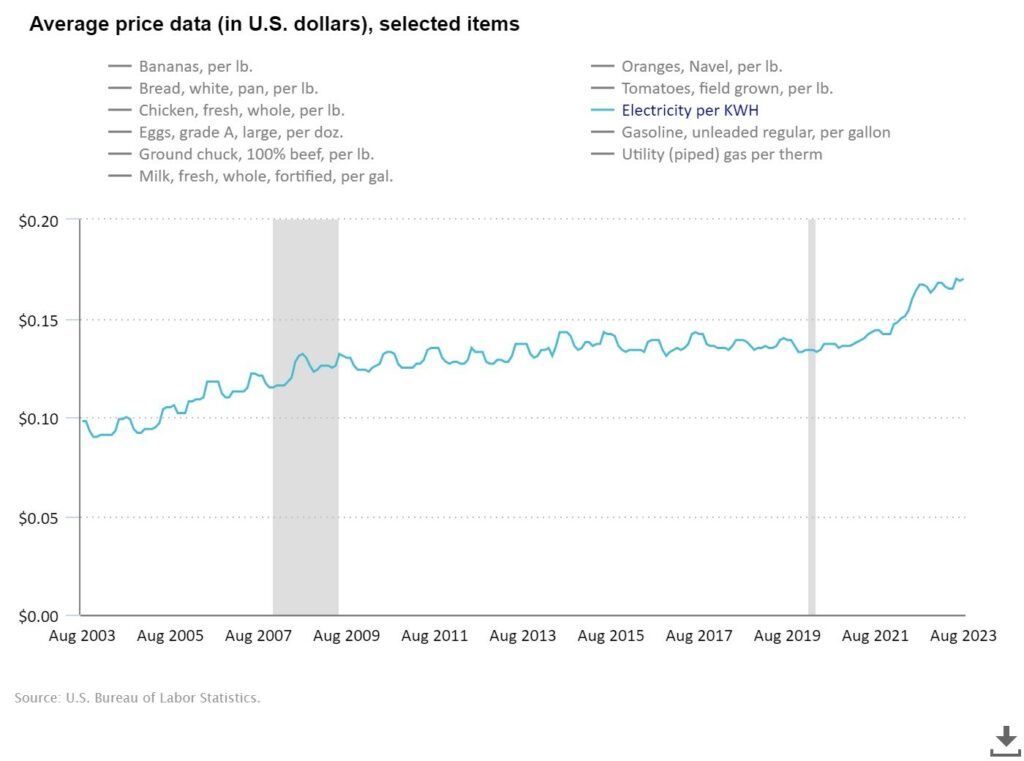
In 2013, electricity per KWH was about 14 cents. The price today is about 17 cents. The price increased by 30%. Just by looking at the chart, you’ll see that it increasing steadily for years.
Of course, if your savings are in Bitcoin, 30% is nothing compared to your 3,783% gains.
Can Crypto Save Us from Inflation?
If we look back at the countries experiencing hyperinflation, Bitcoin is probably a better asset than their local currencies. Let us take Venezuela as an example. Its local fiat, the Bolivar, is continuously losing its battle against inflation. Locals have resorted to using the US dollar and Euro to conduct transactions and preserve wealth. With what we’ve learned from the charts and tables above, Bitcoin would have given them greater returns.
But it is not all rainbows and unicorns. Bitcoin and other crypto assets come with risk. It is true, that we have seen insane returns, but it does not go up all the time. It goes down from time to time. Look at the table below:
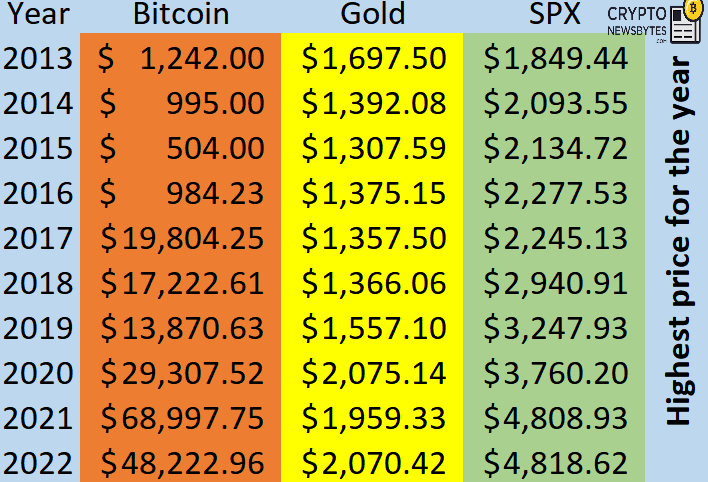
You will lose money if you buy high and sell low. But this problem is not just confined to crypto. Price uncertainties affects traditional assets as well.
Is it a hedge against inflation? It depends on how you look at it. Historically speaking, Bitcoin has outperformed Gold and the SPX for the last 10 years. Will it continue its winning streak? We don’t know. That depends on global adoption and regulations – but those are topics for another day.
However, you have to ask yourself. Is the risk worth the potential reward? Do you have a plan in case your country faces hyperinflation?
The information provided in this article is for informational purposes only and should not be considered financial advice. The article does not offer sufficient information to make investment decisions, nor does it constitute an offer, recommendation, or solicitation to buy or sell any financial instrument.
Credit: Source link



